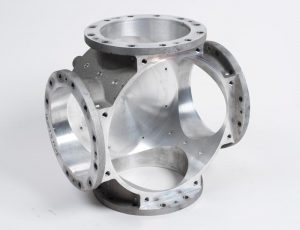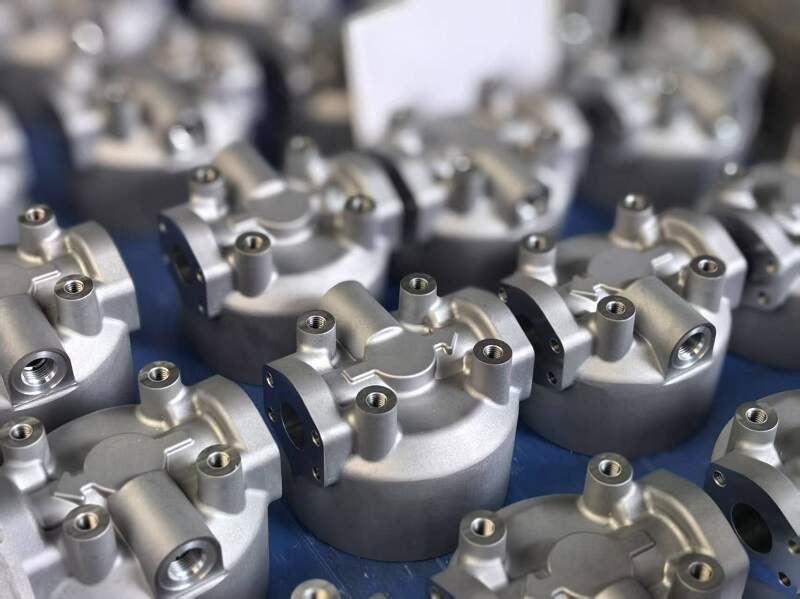How Aluminum Foundry Essential in the Aerospace Industry
Wiki Article
Aluminum Casting Explained: Key Realities and Insights for Sector Professionals
Aluminum casting offers as a vital process in modern-day manufacturing, shaping components across different sectors. Its varied approaches, such as sand and die casting, accommodate different manufacturing needs. The unique residential or commercial properties of aluminum alloys enhance their applicability, yet tests stay in preserving top quality and efficiency. Comprehending these elements is essential for market experts. What are the most recent improvements and ideal methods that can additionally enhance this procedure?Introduction of Aluminum Casting Processes

Key components of aluminum casting processes consist of the preparation of molds, which may be made from sand, steel, or ceramic products, depending upon the planned use. In addition, temperature control is essential to ensure correct melting and solidification of aluminum.
The casting procedure allows for complex designs and can accomplish high levels of dimensional precision. Once cooled down, the castings may go through completing operations such as machining or surface area therapy to meet particular performance criteria. In general, aluminum casting functions as a flexible manufacturing method, successfully meeting the varied requirements of numerous markets.
Types of Aluminum Casting Methods
In the domain of aluminum casting, various techniques are used to accomplish various outcomes. Sand casting methods give flexibility and cost-effectiveness for complicated shapes, while die casting procedures use high accuracy and performance for mass manufacturing. Recognizing these techniques is necessary for picking the suitable technique based upon task demands.Sand Casting Strategies
Sand casting techniques stand for an essential technique in aluminum casting, where sand is made use of as a mold product to shape liquified metal. This process includes developing a pattern from the wanted part, which is after that positioned in a sand combination to develop a mold. The sand is compressed around the pattern, and after elimination, it produces a cavity in the form of the part. Molten aluminum is poured right into this cavity, enabling it to cool and solidify. One significant benefit of sand casting is its flexibility; it can suit intricate shapes and large components. In addition, the products utilized are fairly inexpensive, making it an easily accessible alternative for various manufacturing applications in the aluminum sector.Die Casting Processes
Die casting processes are a popular approach for shaping aluminum parts, making use of high-pressure techniques to require liquified metal right into exactly engineered mold and mildews. This process is especially preferred for its ability to create complicated forms with limited resistances and a smooth coating. There are 2 primary kinds of die casting: hot chamber and cold chamber. Hot chamber die casting appropriates for metals with reduced melting points, enabling faster production prices. Conversely, cool chamber die casting is excellent for higher melting factor steels, calling for a separate melting heating system. Both approaches boost performance and minimize material waste, making them vital in auto, aerospace, and customer items markets. Comprehending these processes helps specialists select the most appropriate technique for their certain applications.Product Feature of Aluminum Alloys

Strength and Sturdiness
Stamina and resilience are important qualities of aluminum alloys that make them suitable for numerous casting applications. These materials show a beneficial strength-to-weight proportion, permitting for the creation of lightweight yet durable parts. With respect to tensile strength, certain aluminum alloys can be crafted to stand up to substantial lots without flawing. This home is specifically crucial in markets such as aerospace and automobile, where efficiency and safety and security are extremely important. Additionally, aluminum alloys frequently keep their mechanical residential properties under diverse temperature level problems, guaranteeing regular efficiency. The intrinsic hop over to here ductility of these alloys also enables reliable shaping during the casting procedure, making it less complicated to create complicated geometries. Generally, the strength and sturdiness of aluminum alloys add considerably to their extensive use in advanced applications.Rust Resistance Characteristics
While aluminum alloys are valued for their toughness and lightweight residential or commercial properties, their deterioration resistance is an additional vital attribute that boosts their suitability for numerous applications. Aluminum normally creates a protective oxide layer when exposed to dampness, which assists to avoid more oxidation. This fundamental residential property makes aluminum alloys particularly beneficial in settings prone to deterioration, such as commercial and aquatic setups. Additionally, different alloy make-ups can affect resistance degrees, with particular alloys specifically engineered to boost this particular. Therapies like plating can additionally boost rust resistance by thickening the oxide layer. Comprehending the corrosion resistance of aluminum alloys is important for industry experts when picking materials for jobs needing resilience and durability in tough settings.Advantages of Aluminum Casting in Manufacturing
Aluminum casting deals many benefits in manufacturing, making it a favored choice for numerous sectors. One substantial advantage is its light-weight nature, which adds to decreased transportation prices and boosted energy effectiveness in end products. Aluminum's excellent thermal and electrical conductivity improves performance in applications calling for heat dissipation or electric conduction.The material's capacity to be cast right into intricate shapes allows for design flexibility, decreasing the requirement for extra machining processes. In enhancement, aluminum casting exhibits exceptional corrosion resistance, causing longer item life expectancies and lower maintenance costs.

Typical Applications of Aluminum Castings
The adaptability of aluminum casting enables its extensive usage across different sectors. Usual applications include vehicle components, where light-weight and corrosion-resistant parts, such as engine blocks and transmission real estates, boost car performance. In the aerospace industry, aluminum castings are made use of for structural components, using toughness without including significant weight.
Furthermore, the electric sector take advantage of aluminum castings in making enclosures and heat sinks, where thermal conductivity is necessary. The consumer goods industry additionally includes aluminum spreadings in items like cookware, furniture, and ornamental things, incorporating looks with capability.
Moreover, the construction market utilizes aluminum castings for building components, home window structures, and components, which give durability and design flexibility. On the click to read whole, the varied applications of aluminum spreadings highlight their value in contemporary manufacturing, contributing to developments in efficiency and item layout throughout numerous fields.
Developments and Technical Improvements
As markets remain to progress, developments in aluminum casting technology are changing production processes and item abilities. Advancements in 3D printing and additive manufacturing have allowed the development of complicated geometries that were formerly difficult to achieve with standard methods. These innovations allow for quick prototyping, reducing lead times and costs.Additionally, improvements in mold and mildew style and products have actually boosted the casting procedure by boosting effectiveness and lowering waste. The combination of wise manufacturing methods, such as IoT devices and real-time information analytics, permits far better surveillance and optimization of production criteria, leading to greater high quality outcomes.
Growths in aluminum alloys give improved toughness, corrosion resistance, and lightweight properties, catering to the growing demands in aerospace and automotive markets. Jointly, these innovations are not only boosting productivity however likewise fulfilling the rigorous standards of contemporary design applications.
Ideal Practices for Quality Control in Aluminum Casting
Making sure high-quality outcomes in aluminum casting needs adherence to finest techniques that incorporate numerous phases of the production process. Complete product examination is essential to verify the quality of aluminum alloys used, as impurities can greatly affect the last item. Implementing accurate melting and pouring techniques minimizes defects; keeping excellent temperature levels protects against oxidation and advertises uniformity.Mold and mildew layout plays an essential function; making use of computer-aided design (CAD) can enhance precision and decrease human mistake. Routine monitoring of the cooling procedure is essential to prevent bending and shrinkage. In addition, making use of non-destructive testing methods, such as ultrasonic or X-ray evaluations, assists determine internal problems without damaging the components.
Ultimately, establishing a responses loop with drivers and engineers cultivates continuous improvement, making sure that quality assurance steps evolve together with technological advancements. By following these ideal practices, makers can boost the dependability and efficiency of aluminum spreadings.
Frequently Asked Concerns
What Are the Ecological Impacts of Aluminum Casting?
The environmental influences of aluminum casting include considerable power intake, greenhouse gas emissions, and prospective water contamination from foundry operations. Furthermore, bauxite mining for aluminum ore can bring about habitat destruction and soil destruction.Just How Does Aluminum Casting Compare to Other Metal Casting Processes?
Aluminum casting typically provides benefits in light-weight parts and deterioration resistance compared to other processes, such as iron or steel casting, which may offer higher strength however cause heavier and less corrosion-resistant items. - aluminum castingWhat Prevail Flaws in Aluminum Castings and Their Reasons?
Usual flaws in aluminum spreadings consist of porosity, shrinking, and incorporations. Reasons usually originate from inappropriate putting strategies, inadequate mold and mildew style, or contamination of the molten metal, influencing the last product's integrity and efficiency.What Safety and security Safety Measures Should Be Taken During Aluminum Casting?
During aluminum casting, essential security precautions consist of using protective gear, making certain appropriate ventilation, keeping a tidy office, taking care of liquified steel with treatment, and adhering to recognized protocols to lessen risks of burns, inhalation dangers, and mishaps.How Can I Boost the Effectiveness of My Aluminum Casting Procedures?
To enhance efficiency in aluminum casting procedures, one should enhance mold layout, improve product handling, use automated processes, perform normal maintenance on tools, and spend in worker training to boost skills and performance.Various approaches exist, aluminum casting encompasses numerous primary processes that cater to different applications and needs. Key elements of aluminum casting processes consist of the preparation of molds, which might be made from sand, metal, or ceramic materials, depending on the meant usage. Sand casting methods stand for a fundamental approach in aluminum casting, where sand is used as a mold product to form molten metal. As sectors continue to advance, technologies in aluminum casting modern technology are changing production processes and item capabilities. Making certain premium results in aluminum casting requires adherence to finest techniques that include numerous stages of the production procedure.
Report this wiki page